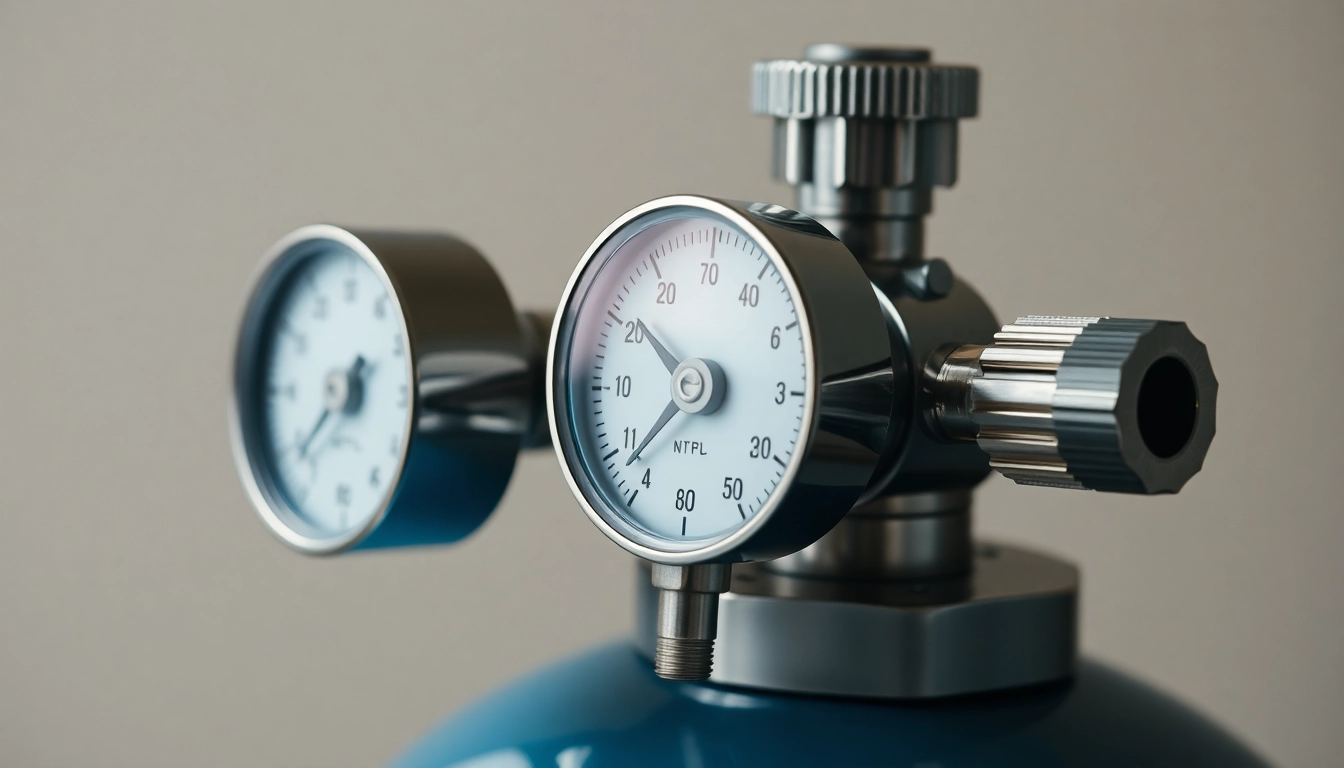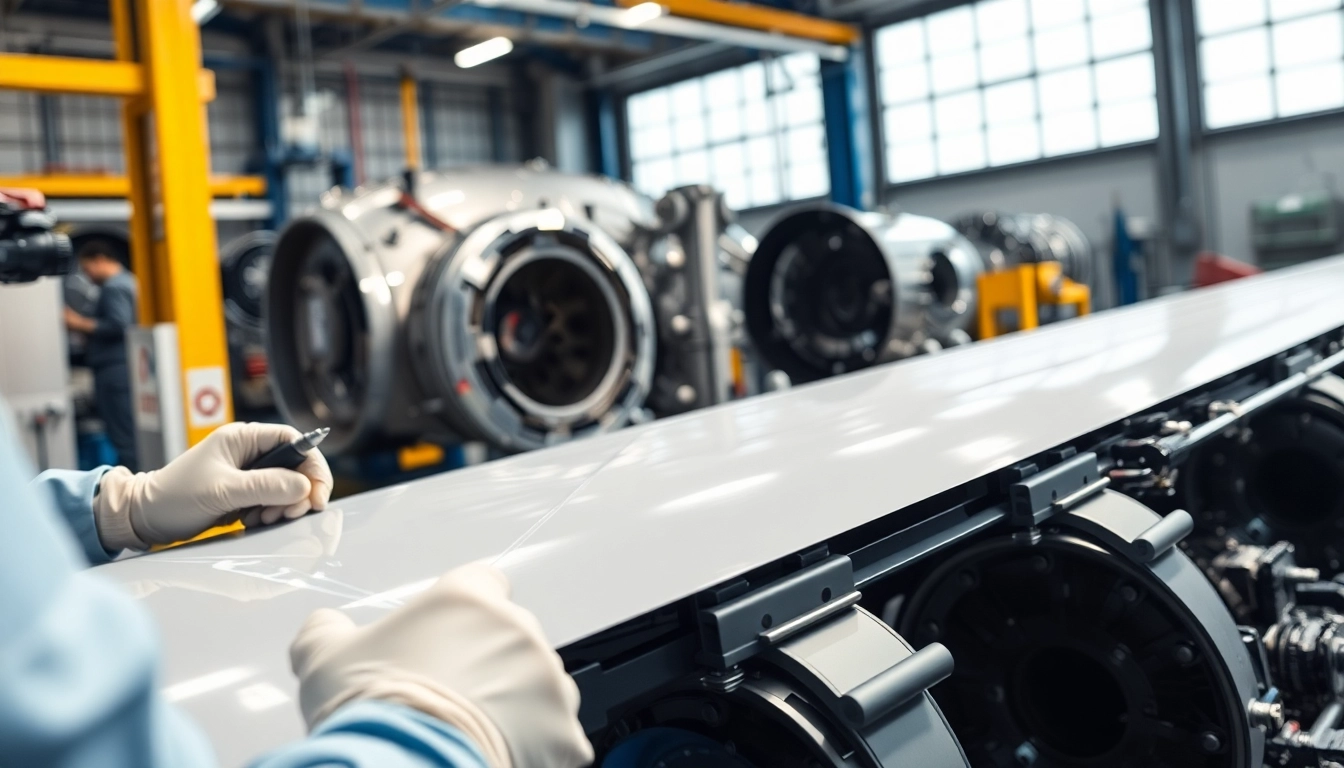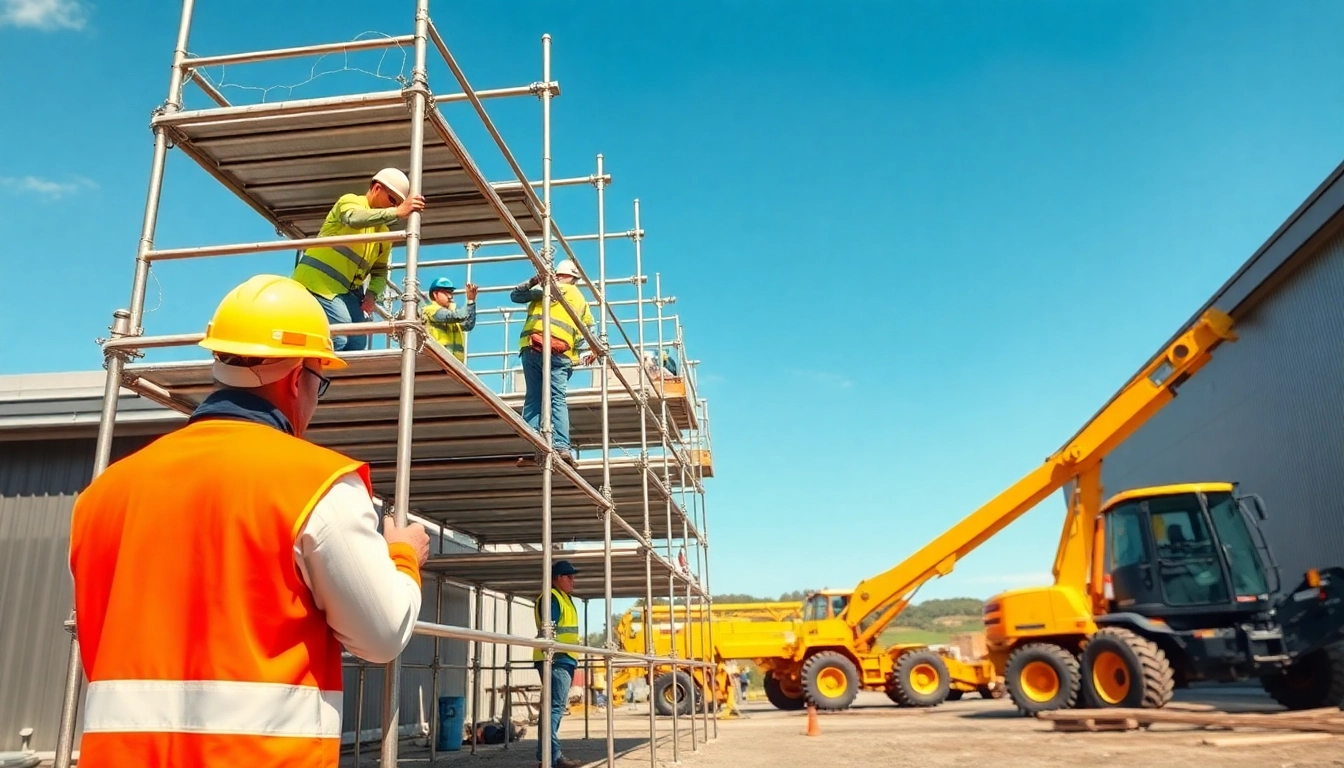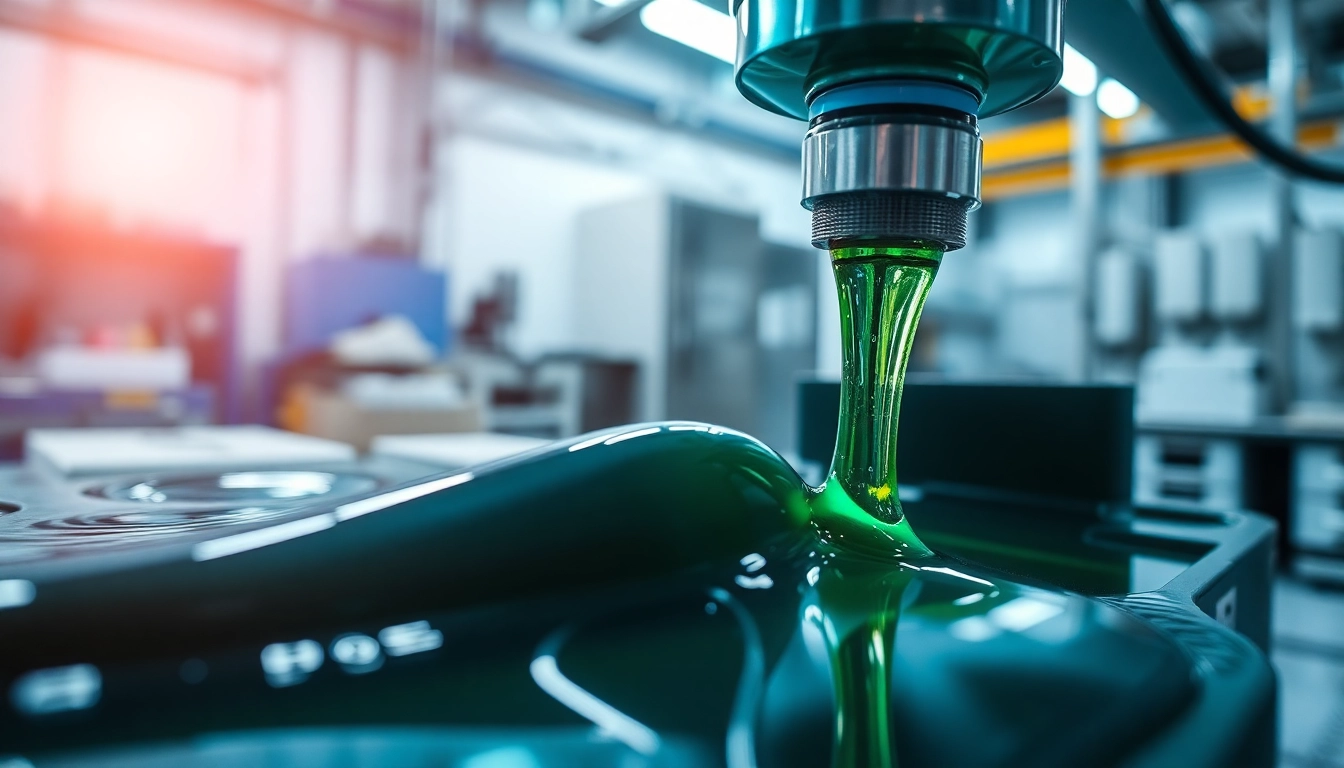Understanding Nitrogen Regulators
What is a Nitrogen Regulator?
A nitrogen regulator is a crucial device utilized across various industries to control the flow and pressure of nitrogen gas from its source. These regulators ensure that the nitrogen is dispensed at a consistent and manageable pressure, allowing for safe and efficient gas management in applications ranging from welding to food preservation.
The basic function of a nitrogen regulator is to reduce the high pressure from a nitrogen cylinder—typically around 2000 PSI—to a much lower pressure suitable for specific applications. This is why a proper understanding of nitrogen regulators is vital for anyone working with nitrogen systems, whether in industrial, laboratory, or brewery settings. For reliable options, consider exploring various nitrogen regulators available in the market.
How Nitrogen Regulators Work
Nitrogen regulators accomplish their task using a series of mechanical components to control gas pressure. The heart of a nitrogen regulator is a diaphragm that responds to changes in pressure, adjusting the gas flow accordingly. When nitrogen gas flows through the regulator, the diaphragm expands or contracts based on the outlet pressure, maintaining it at a set level.
The key components of a nitrogen regulator typically include:
- Inlet connection: Where the nitrogen cylinder connects to the regulator.
- Adjustable pressure knob: Allows users to set their desired outlet pressure.
- Outlet connection: Where the nitrogen flows out for use in various applications.
- Pressure gauge: Displays the outlet pressure, allowing users to monitor and adjust as needed.
When selecting a nitrogen regulator, it’s essential to understand the pressure requirements of your application to ensure compatibility and safety.
Applications of Nitrogen Regulators
Nitrogen regulators are versatile and used across a multitude of industries:
- Welding: In the welding industry, nitrogen is used as a shielding gas to protect molten metal from oxidation.
- Food and Beverage: Nitrogen is utilized to preserve the freshness of beverages and packaged foods by creating a protective atmosphere.
- Laboratories: In laboratory settings, nitrogen regulators are vital in operating analytical instruments and ensuring that experiments are conducted under controlled conditions.
- HVAC Systems: Used for pressure testing in HVAC systems to ensure that there are no leaks in the refrigeration circuit.
Each of these applications requires specific types of nitrogen regulators, influencing their design and functionality. Understanding these applications can help users make informed choices when purchasing regulators.
Types of Nitrogen Regulators
Single vs. Dual Outlet Nitrogen Regulators
Nitrogen regulators can be categorized into single and dual outlet types. A single outlet regulator is used when only one point of use is needed, typically suitable for simple applications. On the other hand, dual outlet regulators are beneficial when multiple processes require nitrogen simultaneously. They allow for controlling different pressures at two outlets, enhancing operational flexibility.
Choosing between single and dual outlet regulators largely depends on your specific needs. For instance, a brewery requiring nitrogen for multiple tanks might opt for a dual outlet regulator to streamline operations.
Adjustable vs. Preset Pressure Regulators
Adjustable pressure regulators allow users to set the outlet pressure according to their needs, making them ideal for applications where the nitrogen pressure requirements vary. This flexibility is a significant advantage in processes like welding or where experimental conditions change.
Preset regulators, conversely, come with a fixed outlet pressure setting, which makes them suitable for operations requiring consistent, unchanging pressure levels. These are often used in established systems where the need for adjustments is minimal.
Choosing Between High and Low Pressure Regulators
When selecting a nitrogen regulator, it is crucial to assess the pressure requirements of your specific application. High-pressure regulators are designed to handle pressures typically exceeding 150 PSI, commonly utilized in industrial and heavy-duty applications. Low-pressure regulators, suitable for lower applications such as paint booth systems or food preservation, maintain output pressures around 0-60 PSI.
Understanding the exact pressure specifications will not only ensure proper functionality but also enhance safety during operation
Key Features to Consider
Material and Durability
The materials used in the construction of nitrogen regulators significantly influence their performance and durability. Most regulators are made from brass or stainless steel, both of which provide excellent durability. Choosing durable materials is essential for ensuring long-term operation, especially in high-pressure environments.
The environment where the regulator will be utilized also impacts the choice of materials. For instance, if it is exposed to corrosive substances, a regulator made from stainless steel is preferred for its resistance to corrosion.
Pressure Range and Flow Rates
One of the critical specifications to evaluate while purchasing a nitrogen regulator is its pressure range and flow rates. Each application demands specific flow rates to maintain efficiency. A regulator with a broader pressure range may offer versatility across various applications, while one with a specific but efficient flow rate is preferable for dedicated tasks.
Understanding the required flow rate will help ensure that you can efficiently operate your machinery or equipment when using nitrogen, leading to optimal performance.
Safety Features in Nitrogen Regulators
Safety should always be a top priority when handling gases. Key safety features to consider when looking at nitrogen regulators include:
- Over-pressure Protection: Many advanced regulators are equipped with over-pressure protection mechanisms to prevent accidents.
- Relief Valves: These valves release excess pressure, maintaining safe operation levels.
- Pressure Gauges: Allow operators to constantly monitor pressure levels to prevent malfunction and enhance safety.
Investing in a regulator that includes robust safety features guarantees not only compliance with safety standards but also the protection of personnel and equipment.
Common Issues and Solutions
Frequent Problems with Nitrogen Regulators
Like any mechanical device, nitrogen regulators may encounter problems during their operation. Common issues include pressure fluctuations, leaks, and malfunctioning pressure gauges. These issues often arise from improper installation, regular wear and tear, or lack of maintenance.
Each problem has a distinct solution:
- For pressure fluctuations, check for blockages or leaks in the system that may affect the supply of nitrogen.
- If leaks are detected, inspect all connections for tightness and condition of seals.
- A malfunctioning pressure gauge may simply need recalibration or replacement.
Being vigilant and regularly inspecting your nitrogen regulator can prevent most of these common issues.
Troubleshooting Low Pressure Issues
Low pressure in a nitrogen system can stem from several factors. Here’s how to troubleshoot:
- Check the cylinder pressure—ensure that there is enough nitrogen in the cylinder to maintain operation.
- Inspect the regulator for blockages or debris that could restrict flow.
- Review all hoses and connectors for wear or damage that might be contributing to pressure loss.
By systematically ruling out these potential issues, you can identify the cause of low pressure and implement corrective measures.
Maintaining Your Nitrogen Regulator
Regular maintenance extends the lifespan of nitrogen regulators and keeps them functioning optimally. Recommended maintenance practices include:
- Routine Cleaning: Remove dust and contamination from external components.
- Periodic Checks: Inspect the regulator’s condition, looking for worn seals or components that may need replacement.
- Regular Testing: Periodically test the performance of the regulator to ensure it operates within specified parameters.
By adopting these practices, users can significantly reduce the risk of malfunction and maintain the efficiency of their nitrogen supply systems.
Conclusion and Best Practices
Summary of Choosing the Right Nitrogen Regulator
Choosing the right nitrogen regulator is critical for ensuring the safety and efficiency of any application utilizing nitrogen gas. Factors such as the pressure requirements, flow rates, types of outlets, and specific application needs play a vital role in this decision-making process.
It is important to consider the operational environment and the types of tasks that the regulator will be facilitating. This knowledge enhances the capability to select a regulator that meets the specific requirements efficiently and safely.
Best Practices for Usage and Maintenance
Implementing best practices in both usage and maintenance can significantly improve the lifespan and performance of nitrogen regulators. Here are some best practices to consider:
- Always ensure that cylinders are correctly secured and stored to prevent tipping.
- Regularly monitor the nitrogen supply and replace cylinders before they run out to avoid fluctuations in pressure.
- Follow operating guidelines to ensure that the nitrogen regulator is used within its specified parameters.
Adhering to these practices allows for seamless operation and enhances safety in environments where nitrogen is utilized.
Resources for Further Information
For those seeking additional information on nitrogen regulators, including specifications and best practices, consider the following resources:
- Manufacturer guidance documentation that accompanies your specific regulator model.
- Industry publications that discuss new technologies and standards in gas management.
- Professional training and certification programs to enhance your knowledge of gas handling.
By leveraging these resources, users can ensure they are well-informed and equipped to operate nitrogen regulators safely and effectively.



